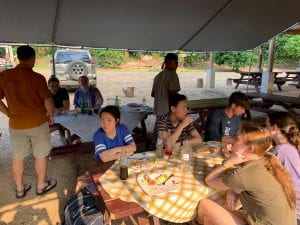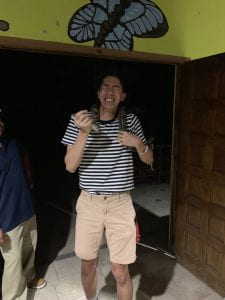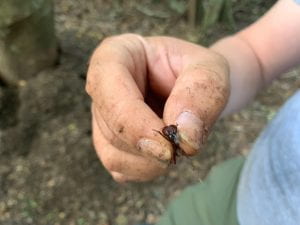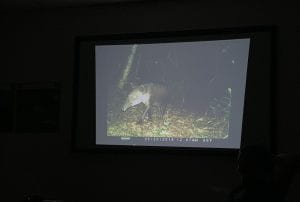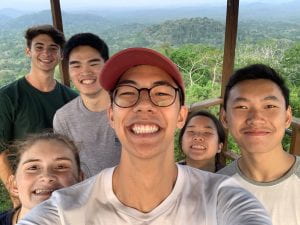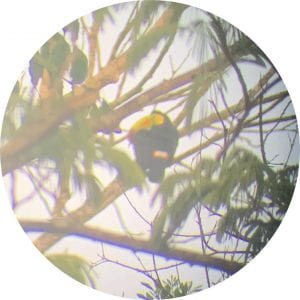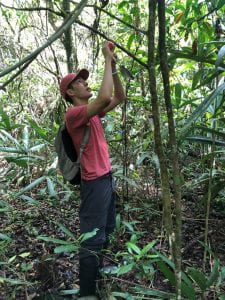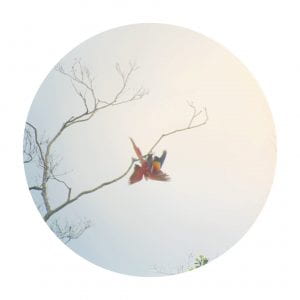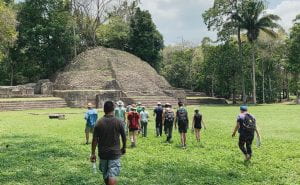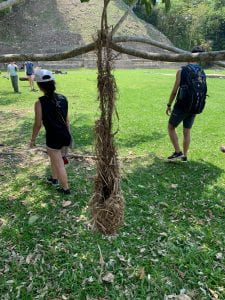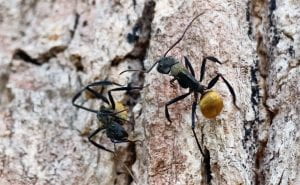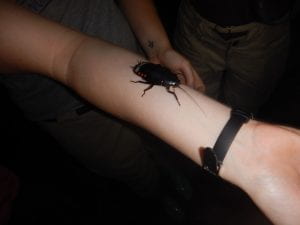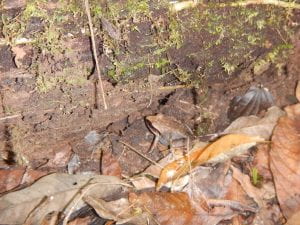
I cannot believe that EBIO 319 has already come to an end. It feels like just yesterday that we boarded our plane to start our journey. Alas, all good things must come to an end. EBIO 319 gave us the best of both worlds: surf and turf. Finally, I was able to see two ecosystems I have read about time and time again in real life. The first and most obvious similarity between the rainforest and reef is that they are both places of incredible biodiversity. Each ecosystem supports hundreds, if not, thousands of different organisms ranging from microbes to top predators.
Coral reefs and the rainforest are also similar because they are usually restricted to certain latitudes (what we call the Tropics), and they depend on a delicate balance of nutrients. As we have learned, both the rainforest and reef could be considered nutrient-poor environments. In the rainforest, the soil is nutrient-poor as most of the nutrients are incorporated in the living trees, and in the reefs, the water column is also nutrient poor. With this in mind, nutrient cycling is vital for the sustainment of these environments. Corals dependent on nutrient-cycling symbionts and tropical rainforest soil depends on decomposition as the warm humid conditions promote faster decay and recycling of nutrients.
Another similarity that I noticed as I explored these areas was the lack of space. In the rainforest, we had a trail that was easy to walk along, but even two feet off of the trail the vegetation started to thicken making it difficult to maneuver. In the same manner, navigating inside some of the patch reefs was incredibly difficult as every inch of space seemed to be occupied. As I have learned in this class and previous classes, the more diverse an area is the more specialized niches that arise. I saw this phenomenon in both areas as it seemed that every organism had a specific niche within their environment occupying nearly every inch of space. This is a factor that allows these areas to maintain that biodiversity.
I also noticed that with this lack of space and abundance of different organisms it promoted some intense defense and survival mechanisms. From my perspective, it seemed like in both regions’ organisms were always on edge. On the coral reef, there were stinging anemones, sea urchin spines, fire coral, and jellyfish. In the rain forest, it seemed like every corner we turned there was a venomous snake, biting insects, thorns, and poisonous plants.
However, I did also notice some things that I felt were different between the areas. Based on my observations, I felt that sites we went to in the rainforest were more “intact” than some of the sites we went to on Glover’s Reef. By intact, I mean that some areas of the reef seemed to be more in peril (less fish, dead coral, fleshy macroalgae) compared to the rainforest. Partly, I attribute this to the fact that we left the marine protected area for some of the reef sites unlike in the rainforest portion where we remained in the protected area. I even think that factors like climate change could provide some insight as to why some of the coral reefs appeared less healthy in some instances.
Overall, I really enjoyed this course. I do think the amount of work before the trip was greater than I expected, and even during the trip, the amount of work we do every day was more than I anticipated. We worked some days for 10-12 hours which is rewarding but also tiring. Although, I think the work before leaving was really beneficial in providing basic background knowledge of Belize. I also did not expect to do so many cool tourist activities like the ATM cave or Belize zoo. I thought those we were really fun and informative activities to do between the surf and turf portions of our class.
My favorite part of the course was learning about how Belize’s history is intertwined with their natural ecosystems. For instance, it was obvious the pride that our Belizean tour guides, Herbie and Javier, took in the reef, and I was surprised to see that. It was not just a job for them or a way to make money; it was them showcasing the place they call home. It gave me a face to the Belize conservation movement. I also loved going into the caves and learning the history behind them. They are experiences that I won’t forget.
I think my least favorite part of the course was the bug bites; I know it may seem significant, but at some points, they were so itchy that I felt it was hard to focus when doing outside activities. I also was not a fan of the long boat rides. They always just made me feel slightly off for the rest of the day.
I learned a lot about myself and my future during this trip. First, I do not think that I want to do fieldwork in the future. I am not saying I never will, but I am just not sure it is the avenue for me. However, I do know that I loved being exposed to these ecosystems and I want to protect them at all costs. So, the second thing this trip taught me is that I am now more interested in conservation and convincing others to appreciate our natural wonders. In other words, I think I am more interested in communicating complex scientific ideas to non-scientists. On a less serious note, another thing I learned was that traveling is very important to me. This small glimpse of life outside the US allowed me to gain an appreciation for my home and their home. So, now I want to make sure traveling to different places is somehow incorporated into my future.
ALL TAXON SEEN ON THIS TRIP:
Rainforest:
- Red-rumped tarantula, Brachypelma vagans
- Spiny Orb Weaver, Gastercantha cancriformis
- Orb Weaver, Araneidae
- Wolf Spider, Hogna sp.
- Harvestman, Cosmitdae sp.
- Florida Bark Scorpion, Centruroides gracilis
- Variety of ticks
Reef:
- Watercress algae, Halimeda optunia
- Three finger leaf algae, Halimeda incrassata
- Mermaid’s fans, Udotea sp.
- Green Bubble Weed, Dictyosphaeria cavernosa
- Sea Pearl, Ventricaria ventricosa
- Bristle Ball Brush Algae, Pencilius dumetosus
- Pink Segmented Algae, Janis adherens
- Reef cement, Porolithon pachydermum
- Burgundy crustose algae, Pessonneliam sp.
- Flat Twig Algae, Amphiroa tribulus
- Y-twig Algae, Amphiroa rigida
- Variety of other Coralline Crustose Algae
